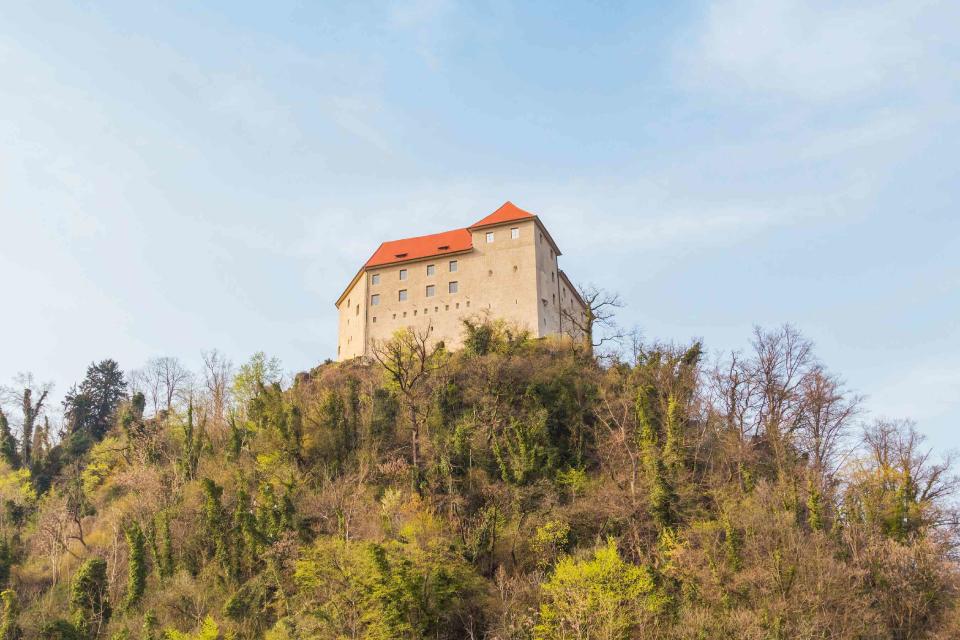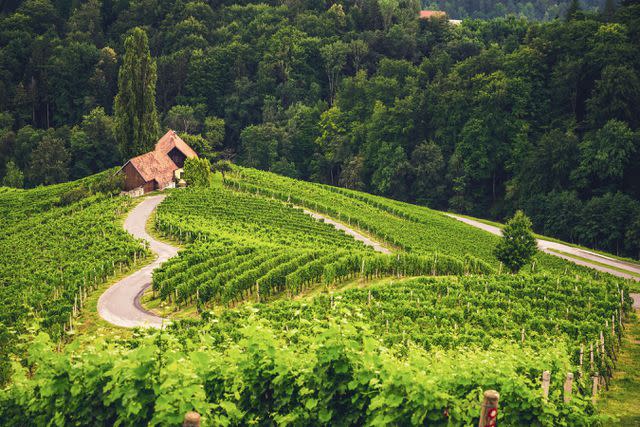Slovenia Is the Most Underrated Wine Destination in Europe
Wine tourism is blossoming in Slovenia — and for good reason.

Getty Images
The latest, greatest wine region in Europe is anything but up-and-coming. In fact, it’s been at it for thousands of years. Viticulture in Slovenia has long been overshadowed by neighboring Italian wine regions, but Slovenia is far from being a new wave wine producer, as winemaking in the country dates back to Celtic tribes in 400 B.C.E.
“Slovenia is home to the oldest vine in the world, which has been producing grapes since the 16th century in the Podravje wine-growing region,” Valentina O'Kane, a Slovenian travel advisor, says. The vine has been growing for 450 years (and there’s even a song about it).
More and more, however, wine experts and tourists are beginning to recognize Slovenia for its exceptional winemaking. The country has recently won multiple international awards, including five platinum, seven gold, 60 silver, and 114 bronze medals at the 2022 Decanter World Wine Awards. Despite Slovenia being half the size of Switzerland, the country boasts over 2,500 wine producers that produce around 90 million liters of wine annually. It has three wine-growing regions and nine wine-growing districts.
Related:Malvasia — A Guide to the Basics
“According to aerial photographs, there are just under 18,550 hectares of vineyards in Slovenia,” Morana Polovič, a sommelier and project manager at the Slovenian Tourist Board, says. Slovenian wines are numerous and vary from full-bodied to light. The country produces 52 varieties, including white, red, rosé, orange (also known as amber), Malvasia, and sparkling. Eastern Slovenia is home to red varietals, while white wines are produced in the west.
Related:The Best Orange Wines to Drink Now
Polovič shares that white wine is 70 percent of the Slovenian wine production, with Pinot Blanc, Chardonnay, Sauvignon Blanc, and Rebula being produced in Goriška Brda. “Rebula is a dry white wine cultivated on Slovenian soil since the 13th century,” O’Kane says. Četrtič’s Ferdinand winery makes organic wine with Rebula grapes that have an aroma of dried autumn fruits and spices with notes of apricot, spices, chamomile, and basil.
Slovenia is most famous for its orange wines, which were made popular internationally by Joško Gravner — an influential ethnically Slovenian winemaker. In the 1990s Gravner visited Georgia, the birthplace of orange wine, which is traditionally macerated in clay vessels known as qvevri. Gravner brought qvevri vessels from Georgia back to Slovenia and started making orange wine. Today, orange wines are produced in all Slovenian wine regions. Kabaj, which has been recognized as one of the 100 best wineries in the world four times by Wine & Spirits, produces Amfora, an amber wine that’s macerated for 12 months in a qvevri.

Alexander Uhrin / Getty Images
From sampling sparkling wine rooted in monastic history to blind wine tasting in a cave, Slovenia offers memorable wine experiences for wine-loving tourists. The Rajhenburg Castle has a basement cellar that was transformed into a sparkling wine-tasting room in October 2021 to honor the castle’s wine history. In the late 1800s Trappist monks lived in the castle and were the first to bring sparkling wine to the region.
Related:For the Ultimate Wine Vacation, Head to Argentina
The monks' wine-making legacy is honored today as the cellar exclusively stores sparkling wines from the region. “The best sparkling wines from the region are presented. Currently, 13 winemakers with around 40 sparkling wines are represented in the cellar, but the offer is continuously upgraded,” Ksenja Kragl from the tasting room says.
In the castle’s tasting room, you can sample sparkling wines from Janez Istenič, who became the first private producer of bottle-fermented sparkling wine in Slovenia in 1968. “The exceptional soil is rich in silicate deposits rarely found elsewhere and is a factor in the excellent minerality with exceptional freshness and fruitiness of our sparkling wines with no added sulfites,” Miha Istenič, CEO of Istenič and son of founder Janez Istenič, says. Other sparkling wines available to try include Koznic, Keltis Mario Rozé, and Domaine Slapsak.
Related:The Secret History of Japanese Wine
Wine tourism is blossoming in Slovenia with many wineries opening their estates to guests. Tri Lučke is a family-owned guest house surrounded by grape vines in Posavje, the heart of Slovenia’s wine country located in the southeastern part of the country. In 1874, the estate belonged to Count Attems, who built a large wooden and stone wine press that is still on display today as a protected cultural monument. The Posavje region is celebrated for red wines, including Cabernet Sauvignon.
If you can’t make it to Slovenia anytime soon to drink sparkling wine in a castle or taste a flight of orange wines, don’t fret — Slovenian wine is making its way to speciality wine stores across the U.S. and online. Order a few bottles from Triglav Wines to sip on as you plan your visit to Europe’s most underrated wine destination.
For more Food & Wine news, make sure to sign up for our newsletter!
Read the original article on Food & Wine.

